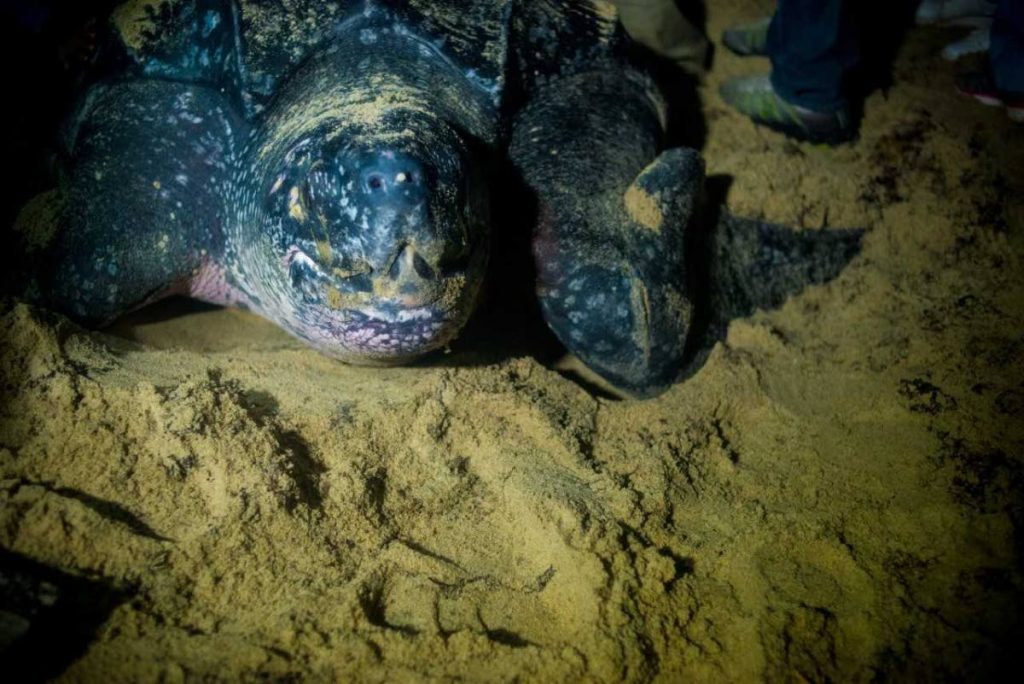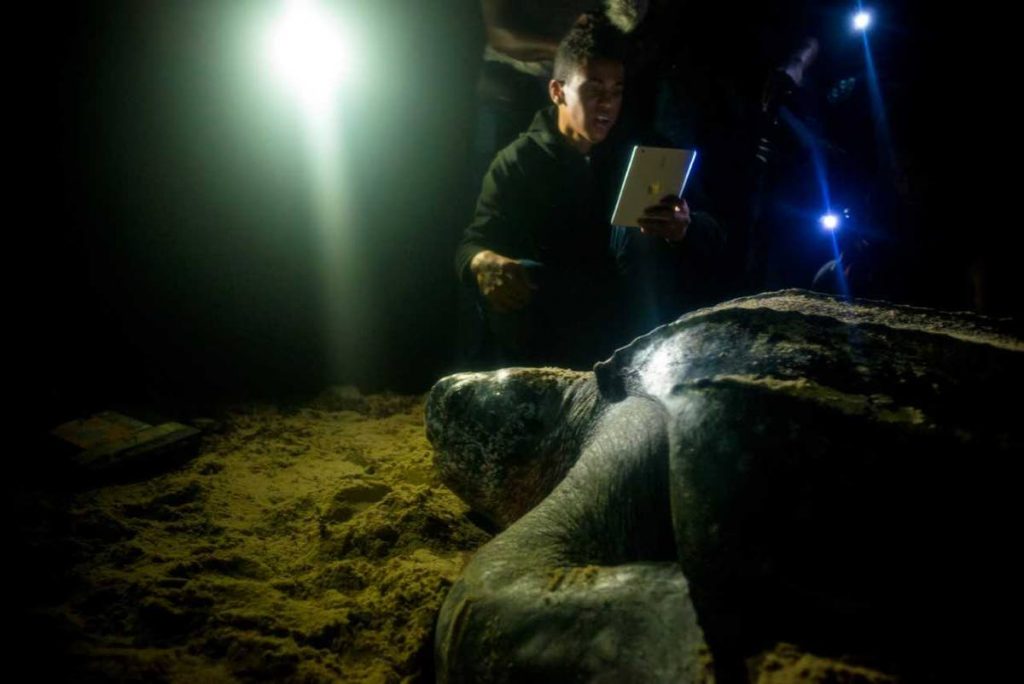Protecting turtles during nesting

IT'S here –the season when turtles return yearly to TT's shores to lay eggs from March to August. The first few leatherback and hard-shell turtles have begun returning to the “turtle” beaches. With their return come the annual reminders from Turtle Village Trust (TVT) and LNG producer Atlantic about how to protect this endangered species and ensure their sustainability.
Camille Salandy, manager of sustainability and corporate communications at Atlantic said that given the turtles’ status as an endangered species, the annual reminders never get old.
“Thankfully, we see more and more people sharing Atlantic’s passion for Trinidad and Tobago’s turtles –passion for their preservation and for the privilege we all have to go to the various turtle beach communities and see these fascinating creatures up close and personal. However, there is always someone new who has not heard the message about protecting the turtles," Salandy said in a media release.
She said that was why Atlantic continues to partner with the Turtle Village Trust on several initiatives that help monitor and protect the turtles and increase awareness about their special role in TT's and the global marine ecosystem.

Atlantic sponsors the National Sea Turtle Tagging and Monitoring Programme, an initiative of the TVT which gathers information about the population of nesting leatherbacks, hawksbill and green turtles. Atlantic also sponsors the Nest Relocation and Hatchery Programme and in 2016 partnered with the TVT and the Grande Riviere Nature Tour Guides Association to launch the Geo-Tagging Project, which use satellite telemetry to track the migratory patterns of hard-shell sea turtles from TT, the release said.
The TVT is the NGO established in 2006 to support the work of local turtle conservation community groups such as the Grande Riviere Nature Tour Guides Association, Nature Seekers (based in Matura), Fishing Pond Turtle Conservation Group and SOS Tobago. With help from corporate sponsors TVT and its partners help to monitor, research and nurture local sea turtle populations, and also to develop ecotourism opportunities in the communities where the turtles nest every year.
Here are some guidelines to follow when turtle watching:
Do go with trained guides.
Always go with a trained guide who can guarantee your safety and that of any sea turtles.
Don’t stand or sit on sea turtles: A sea turtle’s shell is not as strong as it looks. Shells have soft bones and once these bones are broken, the turtle will die.
Do remain quiet and still.
Move around slowly and speak softly in order to keep noise disturbance to a minimum –maintain a distance of at least 10 meters from a nesting turtle unless invited to take a closer look by a trained guide.
Don’t drive on beaches: Vehicles can compress nests buried under the sand or crush hatchlings crawling to sea.
Do use cameras with infrared lenses: Flash photography can disorient nesting females or hatchlings as they crawl on the beach. Cameras with infrared lenses can be used at any time.
Don’t use bright lights or loud speakers: Artificial lights and loud music may discourage females from nesting and disorient hatchlings. Beachfront owners should also shield or switch off all lights illuminating the beach.
Don’t leave litter behind: Be sure not to leave your beach litter behind. Collect trash that you find along beaches, especially plastics. Do not burn or bury any debris on beaches.
Do encourage others to obey the rules. If you see anyone endangering sea turtles, call the police or the following authorities: Turtle Village Trust – 667-8741, community groups – 469-1288 or 670-4257.


Comments
"Protecting turtles during nesting"